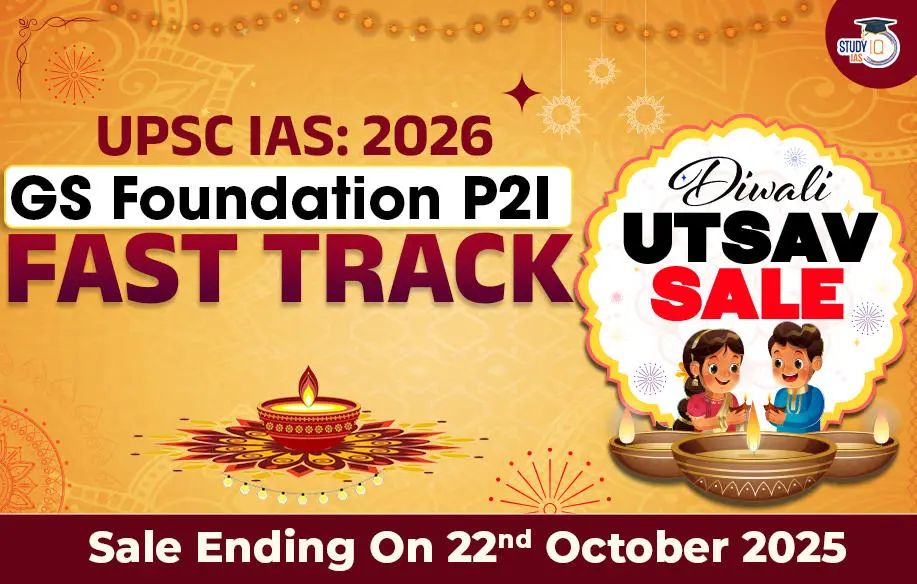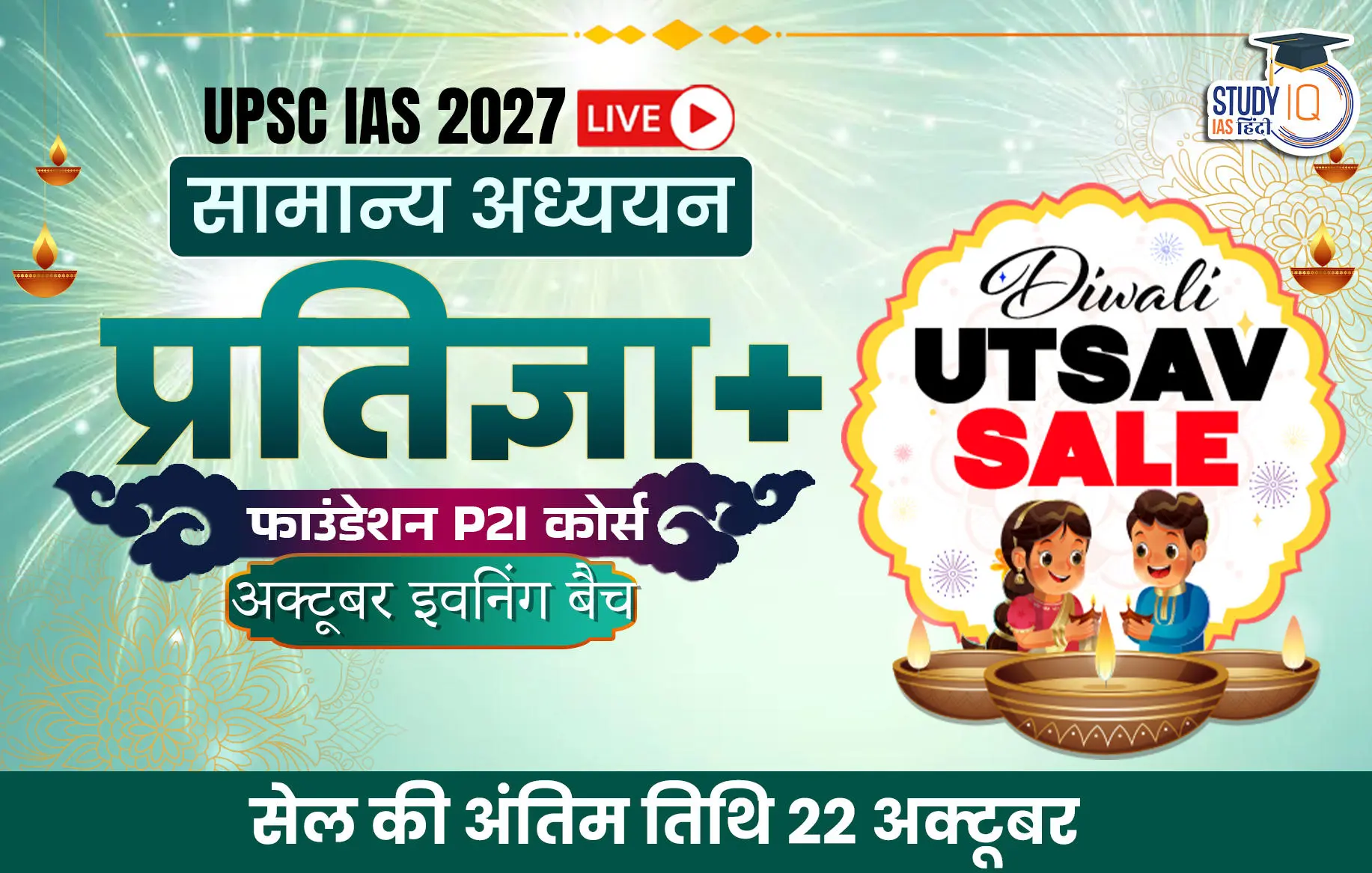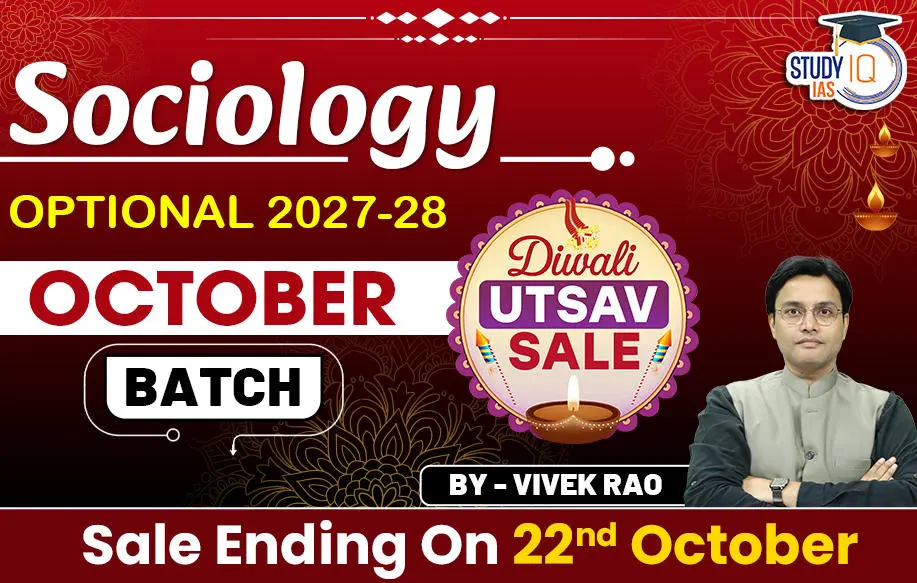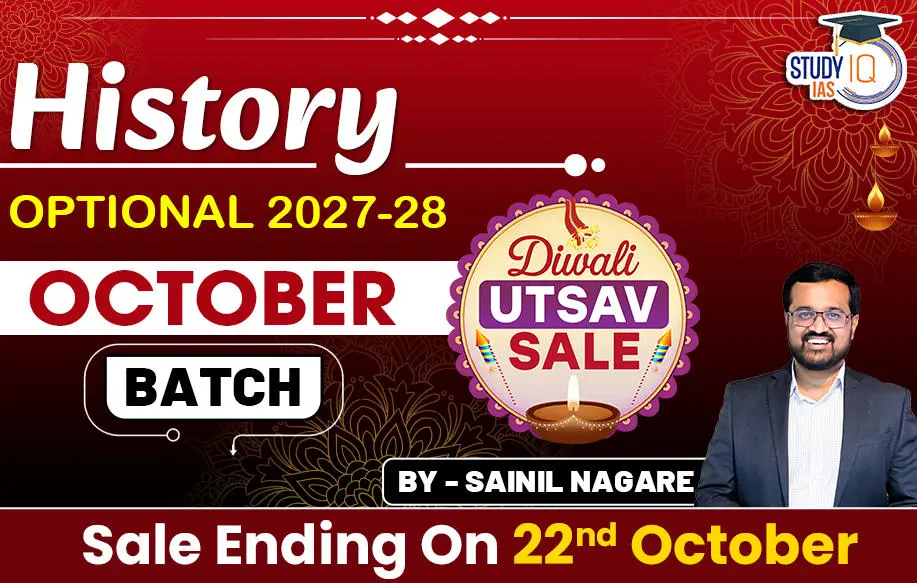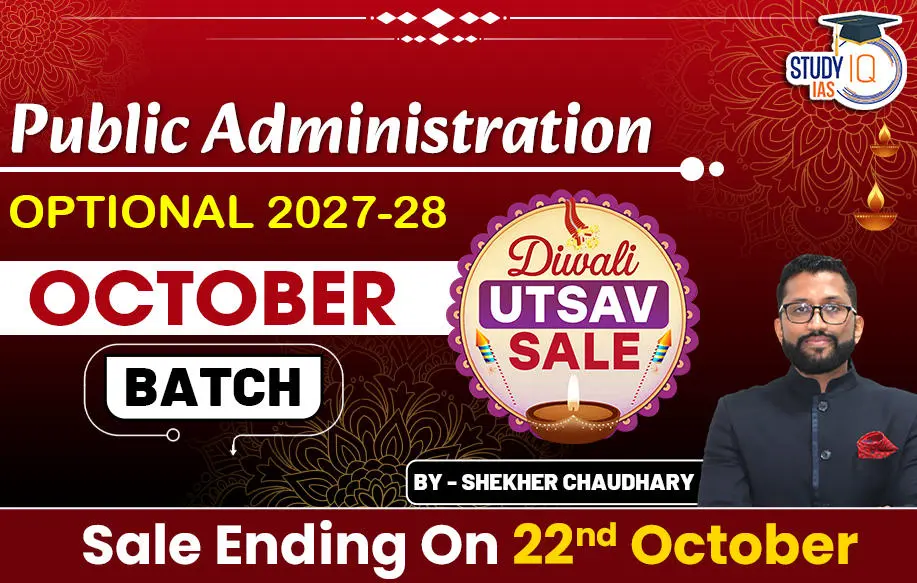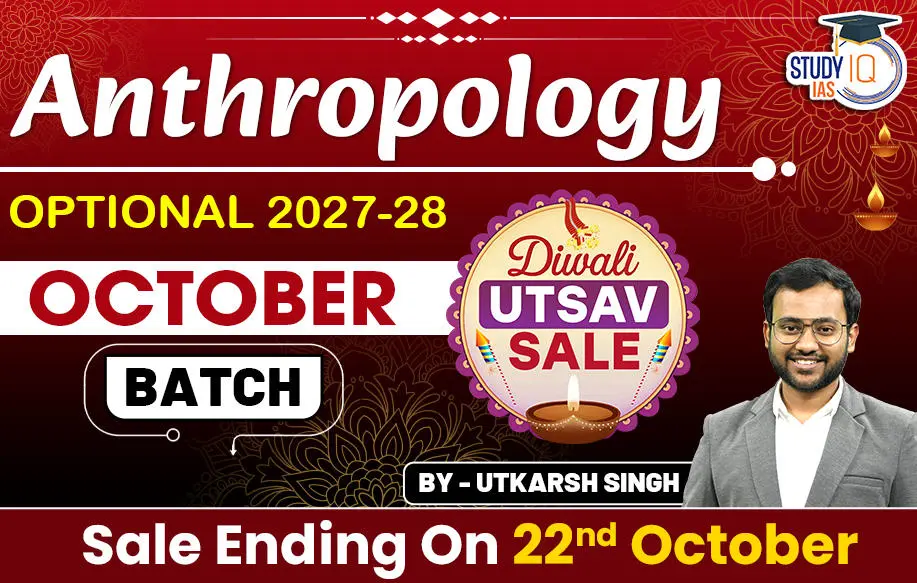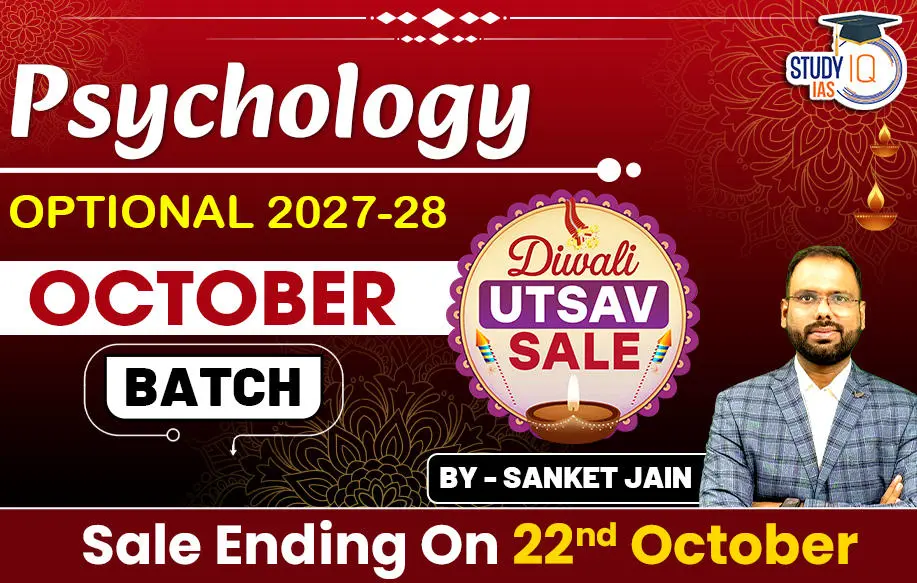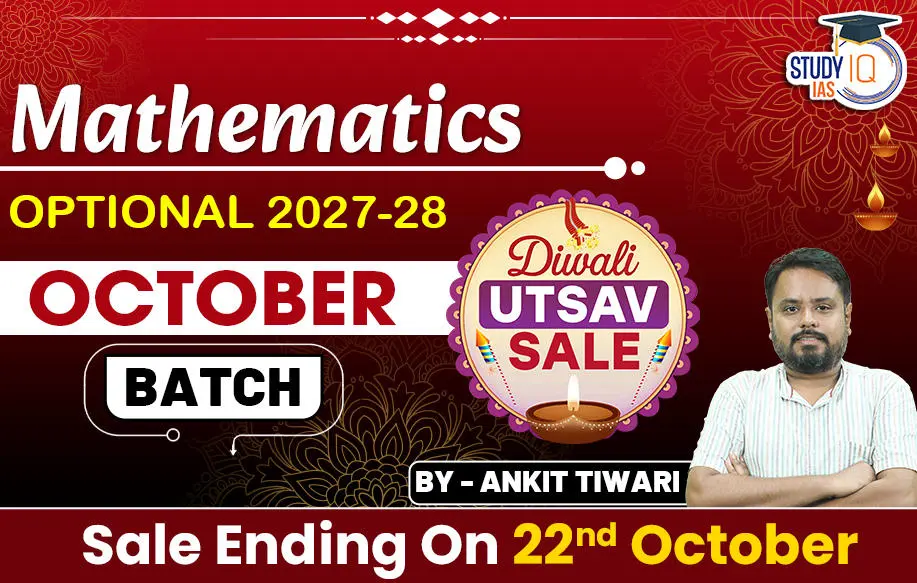Table of Contents
Reflections of StudyIQ MRP Questions in UPSC Mains 2024
| GS PAPER | Questions asked in MRP 2024 |
| GS1 | 9 |
| GS2 | 14 |
| GS3 | 13 |
| GS4 | 6 |
| What is MRP? |
| StudyIQ Mains Residential Program is a one-stop solution for clearing Mains. If you have cleared Prelims, StudyIQ IAS will handhold your preparation by addressing all your academic and non–academic needs to maximize your score in Mains.
Features of the Program
|
General Studies Paper 1 (GS 1)
| GENERAL STUDIES 1 | ||
| SR.NO. | Actual question asked in UPSC CSE Mains 2024 | Questions asked in MRP 2024 |
| 1 | Q2. Estimate the contribution of Pallavas of Kanchi for the development of art and literature of South India. | Discuss the main contributions of Pallavas to Indian heritage and culture. |
| 2 | Q4. What is sea surface temperature rise? How does it affect the formation of tropical cyclones? | Discuss the factors contributing to the rising number of tropical cyclones in the Arabian Sea. How do these cyclones affect the socio-economic landscape of coastal areas in India? |
| 3 | Q9. Intercaste marriages between castes which have socio-economic parity have increased, to some extent, but this is less true of interreligious marriages. | Intercaste marriages act as a tool for social transformation, however they face certain challenges due to entrenched social norms. Discuss |
| 4 | Q11. “Though the great Cholas are no more yet their name is still remembered with great pride because of their highest achievements in the domain of art and architecture.” Comment. | Examine the significance of Sangam literature in portraying the socio-economic and political conditions of the time. |
| 5 | Q12. How far is it correct to say that the First World War was fought essentially for the preservation of balance of power? | Treaty of Versailles, while officially ending world war I, sowed the seeds for future conflicts. Discuss critically. |
| 6 | Q17. What is regional disparity? How does it differ from diversity? How serious is the issue of regional disparity in India? What is regional disparity? How does it differ from diversity? How serious is the issue of regional disparity in India? | Regionalism starts from non-uniformity in the development of states. Comment |
| 7 | Q18. Despite comprehensive policies for equity and social justice, underprivileged sections are not yet getting the full benefits of affirmative action envisaged by the constitution. Comment. | Govt efforts alone cannot be successful, people’s participation is required. Elaborate the significance of people’s participation in making any development process successful and suggest measures to make the process more participatory. |
| 8 | Q19. Globalization has increased urban migration by skilled, young, unmarried women from various classes. How has this trend impacted upon their personal freedom and relationship with family? | The trends of internal migration in India shows that the majority of the migrants are women. What explains this trend? Critically examine the impact of such migration on Indian society and culture. |
| 9 | Q.20 Critically analyse the proposition that there is a high correlation between India’s cultural diversities and socio-economic marginalities. | Do you think the diversity of cultural units of Indian society act as a source of its unity?
The urban poor are most vulnerable to social and environmental shocks. In this context, what strategies can be adopted to provide opportunities for their upward mobility? |
General Studies Paper 2 (GS 2)
| GENERAL STUDIES 2 | ||
| SR.NO. | Actual question asked in UPSC CSE Mains 2024 | Questions asked in MRP 2024 |
| 1 | Q1. Examine the need for electoral reforms as suggested by various committees with particular reference to “one nation-one election” principle. | The recently established panel has argued that Simultaneous elections would be a far-reaching electoral reform. On what grounds, the idea of “one nation, one election” is opposed by some sections of the society? |
| 2 | Q3. “The growth of cabinet system has practically resulted in marginalization of the parliamentary supremacy”. Elucidate. | In the cabinet system adopted by India, the position of the Prime Minister is that of first amongst equals. Elaborate. Discuss features of the Cabinet system in India which seeks to deepen democratic decision making and ensure accountability. |
| 3 | Q4. “The duty of the Comptroller and Auditor General is not merely to ensure the legality of expenditure but also its propriety” Comment. | Highlight the constitutional provisions which ensure independence of the CAG. Also, discuss the challenges faced by CAG in effectively performing its constitutional mandate. |
| 4 | Q5. Analyse the role of local bodies in providing good governance at local level and bring out the pros and cons of merging the rural local bodies with the urban local bodies. | Though the decentralisation process in India has strong roots however, several challenges exist as a hurdle in the deepening of decentralisation and local self governance. Critically analyse the successes and failures of the decentralisation project in India since the enactment of 73rd Amendment Act. |
| 5 | Q7. Poverty and Malnutrition create a vicious cycle, adversely affecting human capital formation. What steps can be taken to break the cycle? | “Poverty is a complex phenomenon that goes beyond material deprivation, driving extensive strategies that address the multifaceted nature of deprivation.” Analyse. |
| 6 | Q8. The Doctrine of Democratic Governance makes it necessary that the public perception of the integrity and commitment of civil servants becomes absolutely positive. Discuss | “The relationship between civil services and democracy is both paradoxical and complementary in nature.” Explain with suitable examples. |
| 7 | Q9. ‘The West is fostering India as an alternative to reduce dependence on China’s supply chain and as a strategic ally to counter China’s political and economic dominance.” Explain this statement with examples. | The United States lays its priority towards its western counterparts to maintain hegemony in the global order. In this context, do you think India should focus upon strengthening its ties with the regional powers to make the Indo-Pacific more stable and secure? |
| 8 | Q12. Right to privacy is intrinsic to life and personal liberty and is inherently protected under Article 21 of the constitution. Explain. In this reference discuss the law relating to D.N.A testing of a child in the womb to establish its paternity. | Has Judicial Activism enlarged the scope of Article 21?
Article 21 as a mini-constitution of Human rights. |
| 9 | Q13. What changes has the Union Government recently introduced in the domain of Centre-State relations? Suggest measures to be adopted to build the trust between the Centre and the States and for strengthening federalism. | Cooperation and coordination between the central and state governments are necessary for smooth running of the federation. In light of this necessity, discuss the division of administrative powers between the centre and states as per Constitutional provisions. |
| 10 | Q16. The Citizen Charter has been a landmark initiative in ensuring citizen- centric administration . But it is yet to reach its full potential. Identify the factors hindering the realisation of its promise and suggest measures to overcome them. | A Citizen’s Charter is the expression of an understanding between the citizen and the public service provider. In this context, explain the rationale behind Citizen’s charter? What are the problems an organisation faces when implementing a Citizen Charter? Do you think digital technology can be used to address some of these problems? |
| 11 | Q17. In a crucial domain like the public healthcare system, the Indian State should play a vital role to contain the adverse impact of marketization of the system. Suggest some measures through which the State can enhance the reach of public healthcare at the grassroots level. | Do you think Pradhan Mantri Jan Arogya Yojana (PM-JAY) needs a design change to make it more effective? Suggest measures for the same. |
| 12 | Q18. e-governance is not just about the routine application of digital technology in the service delivery process. It is as much about multifarious interactions for ensuring transparency and accountability. In this context evaluate the role of the ‘Interactive Service Model’ of e-governance. | Integration of real-time data into policymaking contributes to effective governance. In this context, analyse the role e-governance plays in improving the impact of developmental policies. |
| 13 | Q19. ‘Terrorism has become a significant threat to global peace and security’. Evaluate the effectiveness of the United Nations Security Council’s Counter Terrorism Committee (CIC) and its associated bodies in addressing and mitigating this threat at the international level. | International organisations can help promote cooperation in the fight against terrorism. Evaluate the effectiveness of such organisations in mitigating the threat of global terrorism. |
| 14 | Q20. Discuss the geopolitical and geostrategic importance of Maldives for India with a focus on global trade and/energy flows. Further also discuss how this relationship affects India’s maritime security and regional stability amidst international competition? | India has always stressed upon Maldives as strategically important for trade, tourism and shipping alongside being its key maritime partner in the Indian ocean region, however it is met with certain limitations. Discuss. |
General Studies Paper 3 (GS 3)
| GENERAL STUDIES 3 | ||
| SR.NO. | Actual question asked in UPSC CSE Mains 2024 | Questions asked in MRP 2024 |
| 1 | Q3. What were the factors responsible for the successful implementation of land reforms in some parts of the country? Elaborate. | What are the objectives of land reforms in India? Assess the relevance of land reforms in the contemporary context of India’s economic development. |
| 2 | Q4. Explain the role of millets for ensuring health and nutritional security in India. | Explain the factors which have influenced the cropping pattern in Indian agriculture. Also, highlight the reasons for increased government emphasis on millet production and consumption. |
| 3 | Q5. What is the present world scenario of intellectual property rights with respect to life materials? Although India is second in the world to file patents, still only a few have been commercialised. Explain the reasons behind this less commercialization. | What are the key distinctions among different forms of Intellectual Property Rights? (IPRs) Examine the significance of IPRs in transforming India into a creative and innovation driven economy. |
| 4 | Q7. Industrial pollution of river water is a significant environmental issue in India. Discuss the various mitigation measures to deal with this problem and also the government’s initiatives in this regard. | Discuss the relationship between economic growth and environmental sustainability. How can India pursue growth while ensuring environmental conservation?
What is ocean acidification? Discuss its impacts on marine ecosystems and coastal communities. |
| 5 | Q9. Explain how narco-terrorism has emerged as a serious threat across the country. Suggest suitable measures to counter narco-terrorism. | Analyse the impacts of the drug menace on India’s internal security. What are the institutional measures in place to combat the drug menace in India? |
| 6 | Q.12 What is the need for expanding regional air connectivity in India? In this context, discuss the government’s UDAN scheme and its achievements. | The growth of the Indian aviation industry in the last decade has been driven by a combination of factors. Elaborate. Do you think Public Private Partnership is the way to go for expanding the network of airports in India? |
| 7 | Q13. What are the major challenges faced by Indian irrigation systems in recent times? State the measures taken by the government for efficient irrigation management. | Describe the different types of irrigation systems prevalent in India and discuss their suitability across various agricultural regions. |
| 8 | Q14. Elucidate the importance of buffer stocks for stabilising agricultural prices in India. What are the challenges associated with the storage of buffer stocks? | Discuss the issues related to storage of food grains in India by highlighting the steps taken by the government in this regard. |
| 9 | Q15. The world is facing an acute shortage of clean and safe freshwater. What are the alternative technologies that can solve this crisis? Briefly discuss any three such technologies, citing their key merits and demerits. | The implementation of an advanced wastewater management system is crucial for India’s environmental sustainability, yet it faces several constraints. What strategies can be implemented to enhance wastewater management in the country? |
| 10 | Q17. What is disaster resilience? How is it determined? Describe various elements of a resilience framework. Also mention the global targets of Sendai Framework for Disaster Risk Reduction (2015-2030) | Discuss the interrelationship between development and disasters? Highlight the various measures showcasing the synergies between Disaster Risk Reduction (DRR) and Sustainable Development. |
| 11 | Q18. Flooding in urban areas is an emerging climate-induced disaster. Discuss the causes of this disaster. Mention the features of two such major floods in the last two decades in India. Describe the policies and frameworks in India that aim at tackling such floods. | Flooding and disruption have become the new normal for the monsoon season in major Indian cities. Discuss how Indian cities can cope with increasing flood events. |
| 12 | Q19. India has a long and troubled border with China and Pakistan fraught with contentious issues. Examine the conflicting issues and security challenges along the border. Also give out the development being undertaken in these areas under the Border Area Development Programme (BADP) and Border Infrastructure and Management (BIM) Scheme. | Grey zone warfare has been a feature of conflict for millennia. While discussing the impact of China’s grey zone tactics on India of the 21st century, also provide measures to mitigate the impact of such tactics.
India-Pakistan Relations are characterised by a vicious cycle of Dialogue-Disruption-Dialogue. In this context, discuss the potential of Simla Agreement and Lahore Declaration for breaking this cycle. |
| 13 | Q20. Social media and encrypting messaging services pose a serious security challenge. What measures have been adopted at various levels to address the security implications of social media? Also suggest any other remedies to address the problem. | How has the proliferation of social networking sites and apps contributed to internal security challenges in India? Highlight the measures taken by the government to manage these challenges. |
General Studies Paper 4 (GS 4)
| GENERAL STUDIES 4 | ||
| SR.NO. | Actual question asked in UPSC CSE Mains 2024 | Questions asked in MRP 2024 |
| 1 | Q 1.(b).”Ethics encompasses several key dimensions that are crucial in guiding individuals and organisations towards morally responsible behaviour.” Explain the key dimensions of ethics that influence human actions. Discuss how these dimensions shape ethical decision-making in the professional context. | What are the basic principles of Public life and Private life? Also mention the influence of ethics in private life on ethics in public life. |
| 2 | Q2. (a) “It is not enough to talk about peace, one must believe in it; and it is not enough to believe in it, one must act upon it.” In the present context, the major weapon industries of the developed nations are adversely influencing the continuation of a number of wars for their own self-interest, all around the world. What are the ethical considerations of the powerful nations in today’s international arena to stop continuation of ongoing conflicts? | ‘Hatred when unchecked leads to the loss of conscience, blinding the heart and poisoning the nation’s spirit’. Justify your answer with illustrations. |
| 3 | Q.5 (a) The ‘Code of Conduct’ and ‘Code of Ethics’ are the sources of guidance in public administration. There is a code of conduct already in operation, whereas a code of ethics is not yet put in place. Suggest a suitable model for code of ethics to maintain integrity, probity and transparency in governance. | Ethical considerations influence the decision-making process in international relations, particularly in areas of conflict and diplomacy. Discuss with example the ethical implications of providing foreign aid and humanitarian assistance, and how can these challenges be addressed? |
| 4 | Q.5 (b) The soul of the new law, Bharatiya Nyaya Sanhita (BNS) is Justice,Equality and Impartiality based on Indian culture and ethos. Discuss this in the light of a major shift from a doctrine of punishment to justice in the present judicial system. | The new criminal laws include modern principles of the criminal justice system. Enumerate the impediments in the criminal justice system which need to be overhauled for the robust implementation of the new criminal laws? |
| 5 | Q6) (a) “In Indian culture and value system, an equal opportunity has been provided irrespective of gender identity. The number of women in public service has been steadily increasing over the years.” Examine the gender-specific challenges faced by female public servants and suggest suitable measures to increase their efficiency in discharging their duties and maintaining high standards of probity. | “The root of corruption lies not in the greed of individuals but in the erosion of collective values.”.’’ In the light of this statement, highlight the role of family, society and educational institutions in inculcating the desired values? |
| 6 | Q6) (b) Mission Karamyogi is aiming for maintaining a very high standard of conduct and behaviour to ensure efficiency for serving citizens and in turn developing itself. How will this scheme empower the civil servants in enhancing productive efficiency and delivering the services at the grassroots level? | What are the major challenges faced by the civil services in India? How does Mission Karmayogi aim to address them? |
Download UPSC Mains 2024 Questions directly from StudyIQ PDF

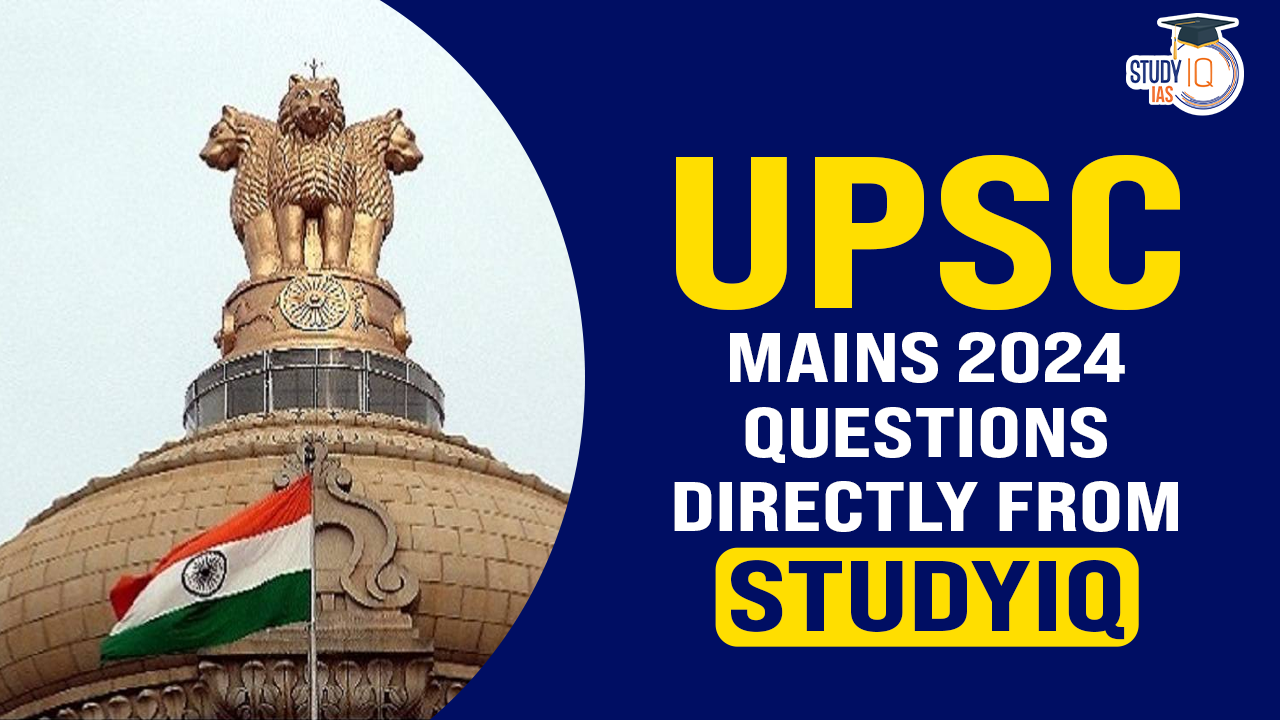

 UPSC CDS 2 Result 2025 Declared at upsc....
UPSC CDS 2 Result 2025 Declared at upsc....
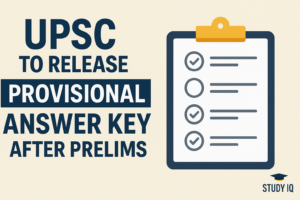 UPSC to Release Provisional Answer Key A...
UPSC to Release Provisional Answer Key A...
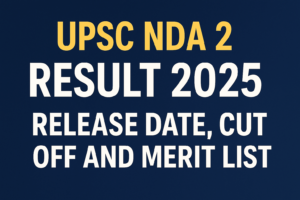 UPSC NDA 2 Result 2025 OUT – Download ...
UPSC NDA 2 Result 2025 OUT – Download ...

